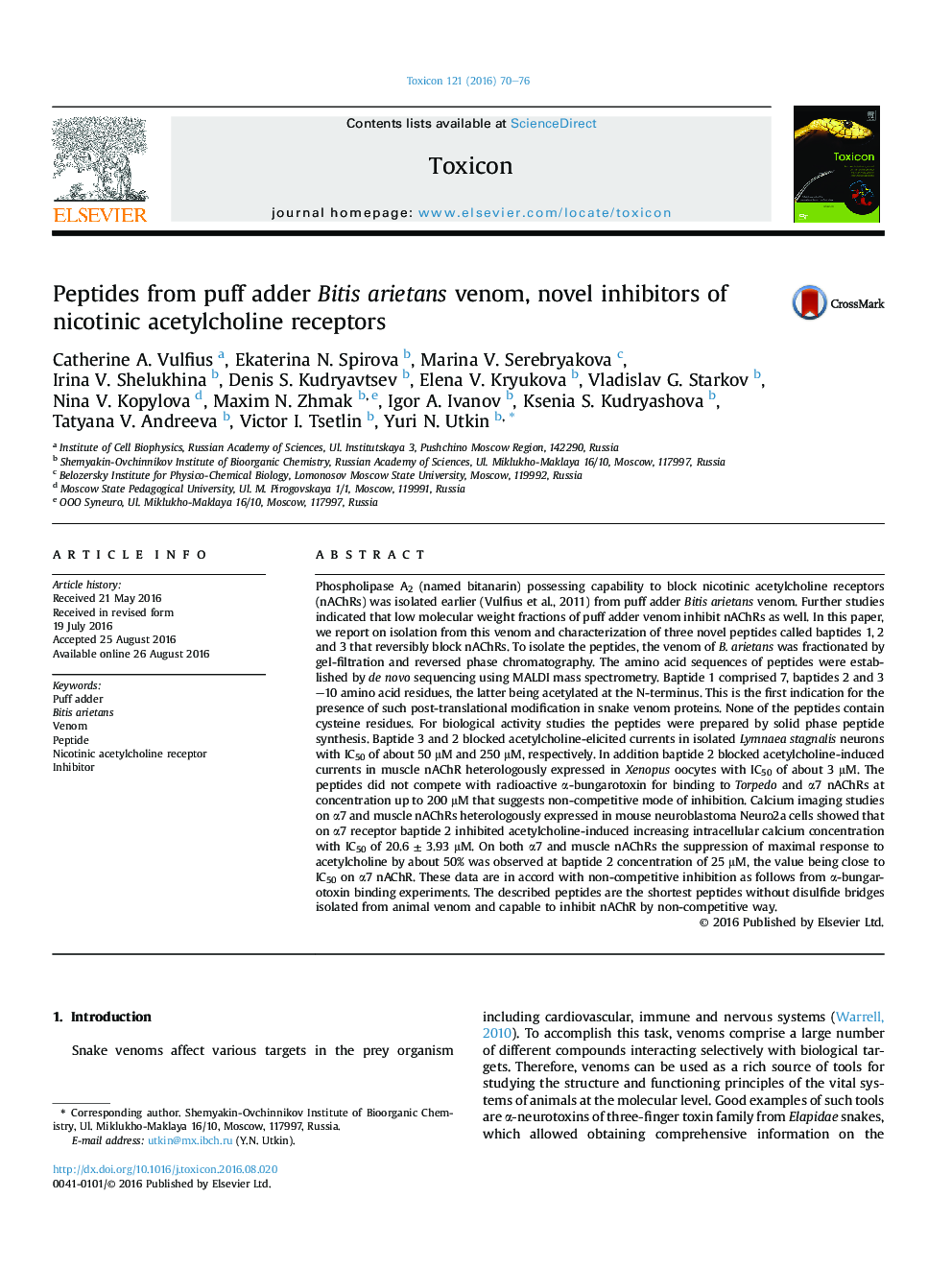| کد مقاله | کد نشریه | سال انتشار | مقاله انگلیسی | نسخه تمام متن |
|---|---|---|---|---|
| 2063952 | 1544115 | 2016 | 7 صفحه PDF | دانلود رایگان |
• Three novel peptides blocking nicotinic acetylcholine receptor (nAChR) were isolated from puff adder venom and sequenced.
• None of the peptides contained cysteine residues.
• Peptides blocked acetylcholine-elicited currents in L. stagnalis neurons and in muscle nAChR expressed in Xenopus oocytes.
• Peptides did not compete with α-bungarotoxin for binding to Torpedo and α7 nAChRs suggesting non-competitive inhibition.
• Peptides are the shortest peptide toxins isolated from animal venoms that inhibit nAChR and contain no disulfide bridges.
Phospholipase A2 (named bitanarin) possessing capability to block nicotinic acetylcholine receptors (nAChRs) was isolated earlier (Vulfius et al., 2011) from puff adder Bitis arietans venom. Further studies indicated that low molecular weight fractions of puff adder venom inhibit nAChRs as well. In this paper, we report on isolation from this venom and characterization of three novel peptides called baptides 1, 2 and 3 that reversibly block nAChRs. To isolate the peptides, the venom of B. arietans was fractionated by gel-filtration and reversed phase chromatography. The amino acid sequences of peptides were established by de novo sequencing using MALDI mass spectrometry. Baptide 1 comprised 7, baptides 2 and 3–10 amino acid residues, the latter being acetylated at the N-terminus. This is the first indication for the presence of such post-translational modification in snake venom proteins. None of the peptides contain cysteine residues. For biological activity studies the peptides were prepared by solid phase peptide synthesis. Baptide 3 and 2 blocked acetylcholine-elicited currents in isolated Lymnaea stagnalis neurons with IC50 of about 50 μM and 250 μM, respectively. In addition baptide 2 blocked acetylcholine-induced currents in muscle nAChR heterologously expressed in Xenopus oocytes with IC50 of about 3 μM. The peptides did not compete with radioactive α-bungarotoxin for binding to Torpedo and α7 nAChRs at concentration up to 200 μM that suggests non-competitive mode of inhibition. Calcium imaging studies on α7 and muscle nAChRs heterologously expressed in mouse neuroblastoma Neuro2a cells showed that on α7 receptor baptide 2 inhibited acetylcholine-induced increasing intracellular calcium concentration with IC50 of 20.6 ± 3.93 μM. On both α7 and muscle nAChRs the suppression of maximal response to acetylcholine by about 50% was observed at baptide 2 concentration of 25 μM, the value being close to IC50 on α7 nAChR. These data are in accord with non-competitive inhibition as follows from α-bungarotoxin binding experiments. The described peptides are the shortest peptides without disulfide bridges isolated from animal venom and capable to inhibit nAChR by non-competitive way.
Journal: Toxicon - Volume 121, October 2016, Pages 70–76
